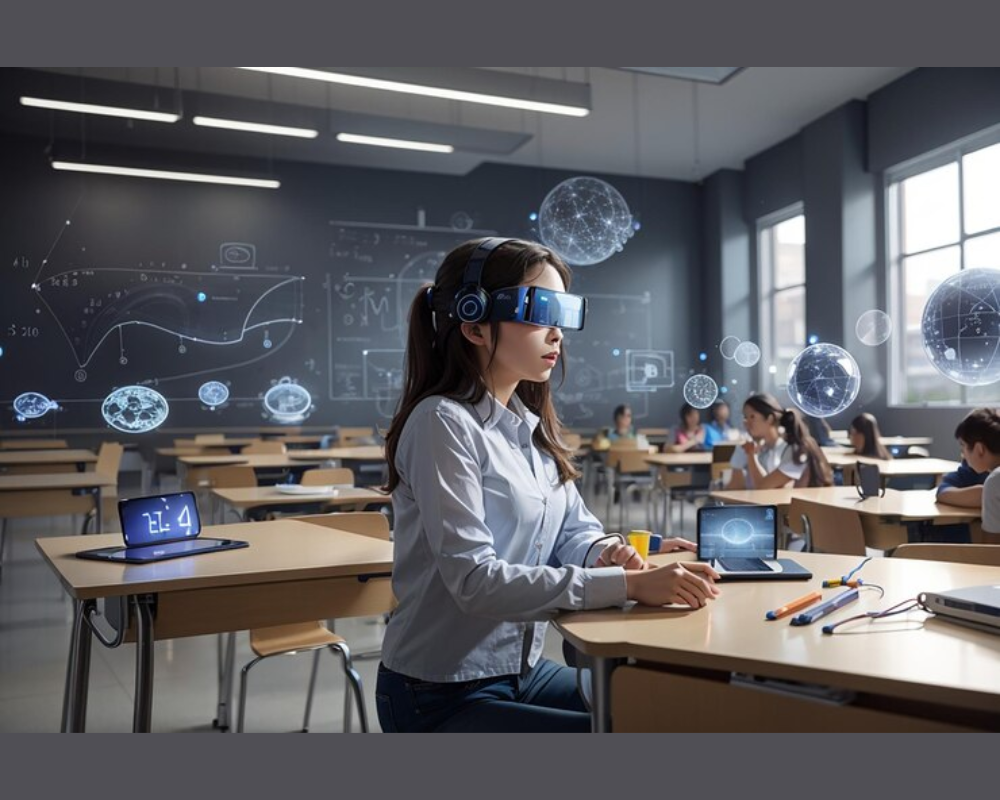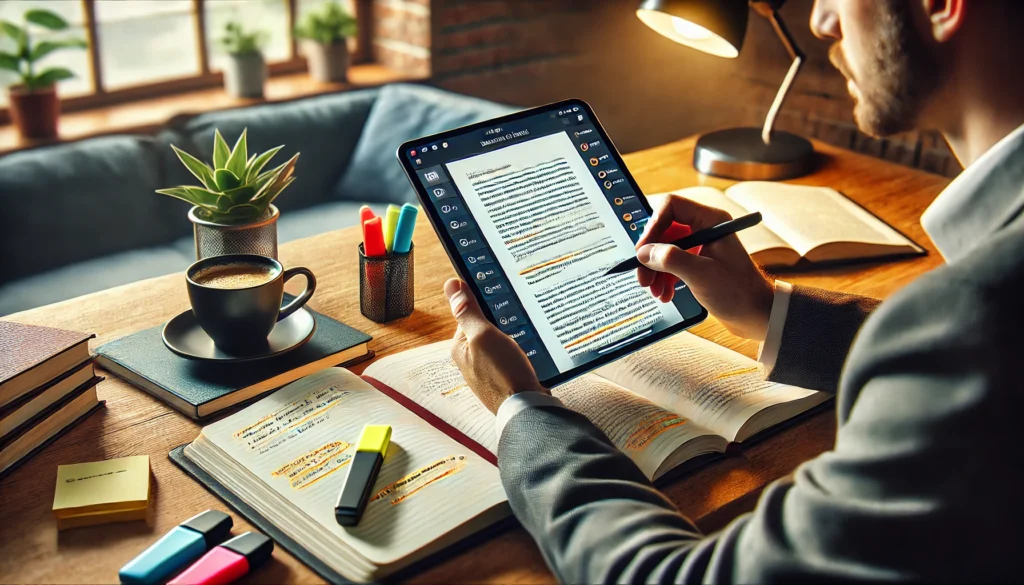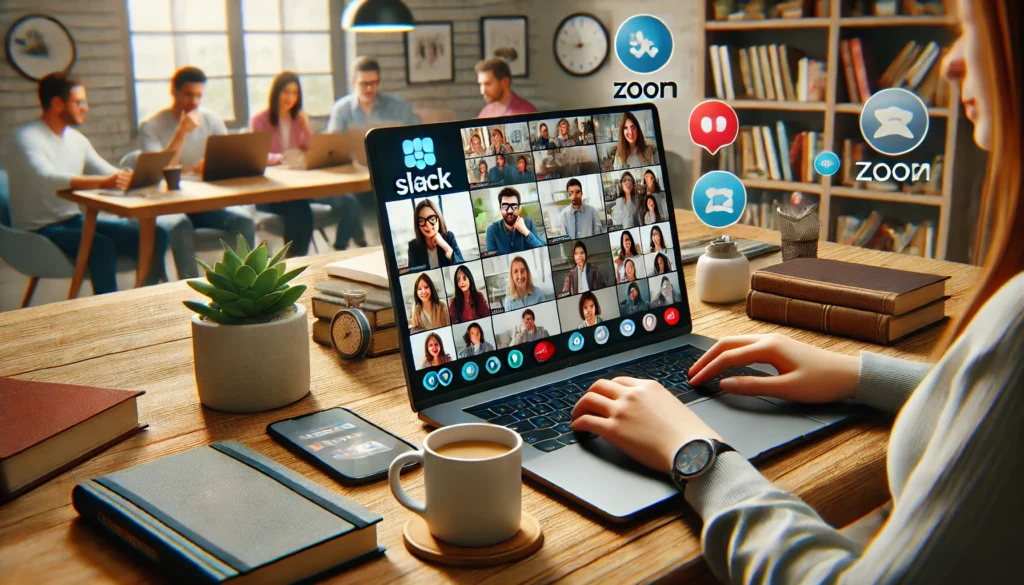Transform Learning with Technology!
Tools like Simulation and Augmented Reality for Classrooms help teachers create interactive experiences that connect theoretical concepts to practical applications.
Technology is transforming how we teach and learn, making lessons more dynamic and engaging.
Imagine exploring the solar system, visualizing 3D cells, or building virtual worlds, all within a classroom.
This article introduces 10 free apps that let you integrate augmented reality and advanced simulations into your teaching.
These apps are essential tools for educators looking to modernize their methodologies and offer students an unforgettable learning experience.
The Revolution of Education with Simulation and Augmented Reality
Simulation and Augmented Reality for Classrooms offers a new perspective on teaching.
Teachers can take students on experiences that once seemed impossible, such as exploring the human body in detail or visualizing complex physical phenomena in real-time.
In addition to increasing interest, these tools encourage self-directed learning and help solidify knowledge.
Why not leverage this technology to overcome the challenges of traditional methodologies?
Consider how these tools can make your lessons more memorable and impactful.
10 Apps to Innovate in the Classroom
Let’s explore the best free apps available. Each tool was selected for its features and potential to transform education.
1. Google Expeditions
Description: Google Expeditions allows teachers to lead students on immersive virtual and augmented reality tours. With over 900 options, you can visit museums, explore space, or dive into the oceans.
Key Features:
- Global exploration with AR and VR tours.
- Compatible with Android and iOS devices.
- Teachers can lead sessions with the “Guide Mode.”
- Interactivity with 3D objects.
Practical Example: Show screenshots of popular tours, such as the solar system in AR.
Question: How would you use Google Expeditions to explain natural phenomena?
2. AR Flashcards
Description: Perfect for children, AR Flashcards transform traditional flashcards into interactive experiences, animating numbers, letters, and animals in 3D.
Key Features:
- Multisensory: audio, image, and interaction.
- Easy to use, ideal for kids aged 4 to 7.
- Teachers can customize the flashcards.
- Focused on literacy and early learning.
Practical Example: Capture the interaction with an animated card, showing how it comes to life.
Question: Do you think interactive tools like this can accelerate early childhood learning?
3. Anatomy 4D
Description: This app allows you to explore the human body in detail with interactive AR models, perfect for biology and health classes.
Key Features:
- 3D visualization of organs and systems.
- Free and precise resources.
- Interactivity to zoom in and rotate models.
- Excellent for anatomical studies.
Practical Example: Add an image of a 3D model of a heart or lungs.
Question: How would using Anatomy 4D replace physical anatomical models in your school?
4. JigSpace
Description: JigSpace provides simple and effective simulations for teaching science, technology, and engineering. Teachers can use tutorials to explain complex concepts.
Key Features:
- Diverse themes: from engines to history.
- Detailed tutorials.
- Create and share presentations.
- Free and versatile.
Practical Example: Show a tutorial on engineering with the app.
Question: Do you believe simulations like JigSpace can increase students’ interest in engineering?
5. CoSpaces Edu
Description: CoSpaces Edu is a platform that lets students create collaborative virtual worlds in AR and VR, stimulating creativity.
Key Features:
- Tools to build personalized simulations.
- Support for block-based programming.
- Ideal for multidisciplinary projects.
- Encourages collaboration among students.
Practical Example: Include images of virtual worlds created by students.
Question: How would you apply CoSpaces Edu to foster teamwork in your classroom?
6. Assemblr EDU
Description: Create educational diagrams, maps, and 3D interactive content with augmented reality. Perfect for illustrating visual concepts.
Key Features:
- Intuitive interface for teachers.
- Works with presentations and slides.
- Diverse content for various subjects.
- Completely free.
Practical Example: Show how to create interactive diagrams in just a few steps.
Question: How could Assemblr EDU simplify complex concepts in your lessons?
7. Merge EDU
Description: Merge EDU combines AR and physical objects to create interactive experiences, gamifying learning.
Key Features:
- Interactive models from dinosaurs to molecules.
- Merge Cube support for greater immersion.
- More engaging and dynamic lessons.
- Freely available with premium features.
Practical Example: Include a photo of students using the Merge Cube.
Question: What’s the best way to gamify your subject using Merge EDU?
8. QuiverVision
Description: Transform printed drawings into animated 3D experiences, making art lessons more creative and interactive.
Key Features:
- Easy to use with any printer.
- Ideal for children and teenagers.
- Combines creativity with technology.
- Completely free.
Practical Example: Capture an animated drawing using the app.
Question: Do you believe QuiverVision can help students develop more interest in arts?
9. HP Reveal
Description: Create personalized AR experiences with everyday objects, allowing anything to become an interactive animation.
Key Features:
- Versatile and creative.
- Easy to use.
- Share personalized creations.
- Free app.
Practical Example: Show a photo of an interactive history project.
10. SketchAR
Description: SketchAR guides students to draw precisely by projecting AR images onto paper.
Key Features:
- Accurate projection to improve drawing.
- Ideal for art and design classes.
- Helps students with difficulties in art.
- Motivational tool.
Practical Example: Show a drawing being made with the app’s guidance.
Question: How can SketchAR encourage artistic practice in your school?
Comparative Table of the 10 Simulation and Augmented Reality Apps for Classrooms
| App | Key Features | Advantages | Disadvantages | User Feedback |
|---|---|---|---|---|
| Google Expeditions | AR and VR tours for interactive lessons | – Large variety of tours (900+) – Free | – Requires compatible devices | “Very useful for exploring complex topics like space. The students loved it!” |
| AR Flashcards | Animated educational flashcards | – Ideal for kids – Multisensory | – Limited to basic topics | “My daughter learned the alphabet quickly! Simple and fun.” |
| Anatomy 4D | Detailed 3D anatomy models | – High precision – Free advanced features | – Focused exclusively on anatomy | “Great for teaching biology. Students were impressed by the level of detail.” |
| JigSpace | Simulations for science and technology | – Diverse topics – Free | – Available only in English | “Very educational! I used it to explain how engines work.” |
| CoSpaces Edu | Create worlds in AR and VR | – Encourages creativity – Includes coding | – Steep learning curve initially | “My students created amazing projects. Excellent tool for collaboration.” |
| Assemblr EDU | Interactive 3D diagrams and content in AR | – Intuitive interface – Versatile content | – Requires internet for complete resources | “Perfect for explaining complex diagrams. Easy to use.” |
| Merge EDU | 3D interactive objects | – Gamification – Merge Cube support | – Premium features can be expensive | “Students were motivated and more interested in the subject.” |
| QuiverVision | 3D animated drawings | – Creative and playful – Easy to use | – Requires printed drawings | “Excellent for arts. Kids loved seeing their drawings come to life!” |
| HP Reveal | Custom AR experiences for objects | – Versatile – Fosters creativity | – App can be unstable | “I turned old photos into interactive memories for a history lesson.” |
| SketchAR | AR drawing guides | – Ideal for art – Motivates students | – Challenging for beginners | “A unique tool for teaching drawing. Takes practice to master.” |
Key Observations
- Best for Global Exploration: Google Expeditions for its wide range of interactive tours.
- Most Suitable for Kids: AR Flashcards for its simplicity and focus on basic learning topics.
- Best for Biology: Anatomy 4D for its precise anatomical models.
- Most Creative: CoSpaces Edu and QuiverVision excel at stimulating imagination and collaboration.
- Best for Visual Diagrams: Assemblr EDU simplifies teaching complex topics effectively.
This table makes it easy to choose the ideal app for your lessons. Which one will you try first? Let us know in the comments!
Implementation Plan for Teachers
- Identify your needs: Choose an app that matches your lesson goals.
- Test the tool: Explore the app before using it with students.
- Prepare the environment: Ensure devices are ready and connected.
- Explain to students: Demonstrate how to use the app and outline objectives.
- Monitor results: Evaluate the app’s impact on learning.
Conclusion
Simulation and Augmented Reality for Classrooms represents a revolution in education, bringing a new level of interactivity that connects theoretical concepts to practical applications.
These apps allow teachers to move beyond traditional approaches, making learning more engaging, visual, and personalized.
Whether exploring the human body in 3D, creating collaborative virtual worlds, or bringing drawings to life, these tools offer endless learning possibilities.
Additionally, using these technologies fosters essential skills in students, such as critical thinking, collaboration, and autonomy.
This not only enhances the educational experience but also prepares students for the digital world and the challenges of the job market.
Which App to Choose?
With so many amazing options, it can be challenging to decide which app to use.
Each tool has its own advantages, depending on the lesson’s needs and educational objectives.
For example:
For those looking to innovate in art classes, SketchAR and QuiverVision are ideal, as they combine art and technology in an interactive way.
If the focus is on exploring detailed scientific concepts, Anatomy 4D is an excellent choice for its precision.
To promote creativity and collaboration among students, CoSpaces Edu and JigSpace offer robust tools for creation and learning.
Early childhood educators might prefer AR Flashcards, which makes basic learning fun and interactive.
This table shows that there is no universally “best” app; the choice depends on the context and the content you want to teach.
| App | Best Use | Strengths | Weaknesses |
|---|---|---|---|
| Google Expeditions | Global and immersive exploration | Large variety of tours and free access | Requires compatible devices |
| AR Flashcards | Early childhood education | Simple and educational interactivity | Limited to basic topics |
| Anatomy 4D | Biology and health teaching | High precision in anatomical models | Focused exclusively on anatomy |
| JigSpace | Science, engineering, and history | Variety of topics and useful tutorials | Available only in English |
| CoSpaces Edu | Creativity and collaborative projects | Multidisciplinary with integrated coding | Initial learning curve |
| Assemblr EDU | Visual concept explanation | Easy to use and versatile | Full features require internet access |
| Merge EDU | Practical science and gamification | Motivating interactive models | Premium features can be expensive |
| QuiverVision | Arts and creativity | Playful education and easy access | Requires printed materials |
| HP Reveal | History and object personalization | Customizable AR creation | Device instability |
| SketchAR | Arts and design teaching | Practical drawing guide | Challenging for beginners |
Where to Download and How to Participate
All the apps mentioned are available for free on the Google Play Store and App Store, ready for you to explore and transform your classroom.
Choose the one that best suits your needs, download it today, and start experiencing the benefits of Simulation and Augmented Reality for Classrooms.
We’d love to hear your opinion!
Which of these apps caught your attention the most?
How do you plan to use it in your lessons?
Leave a comment or question below.
Your experience could inspire other educators to innovate in their teaching practices!





